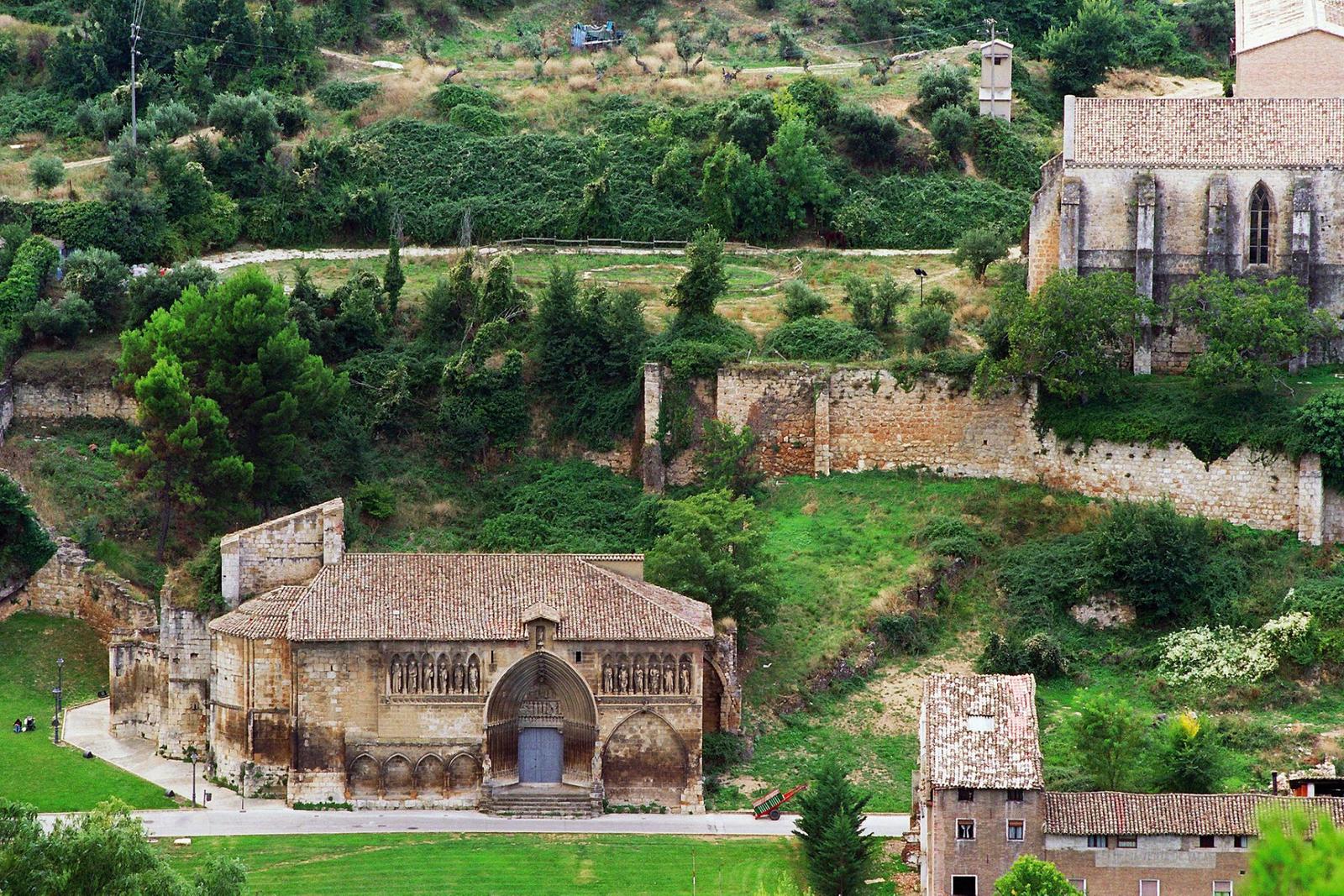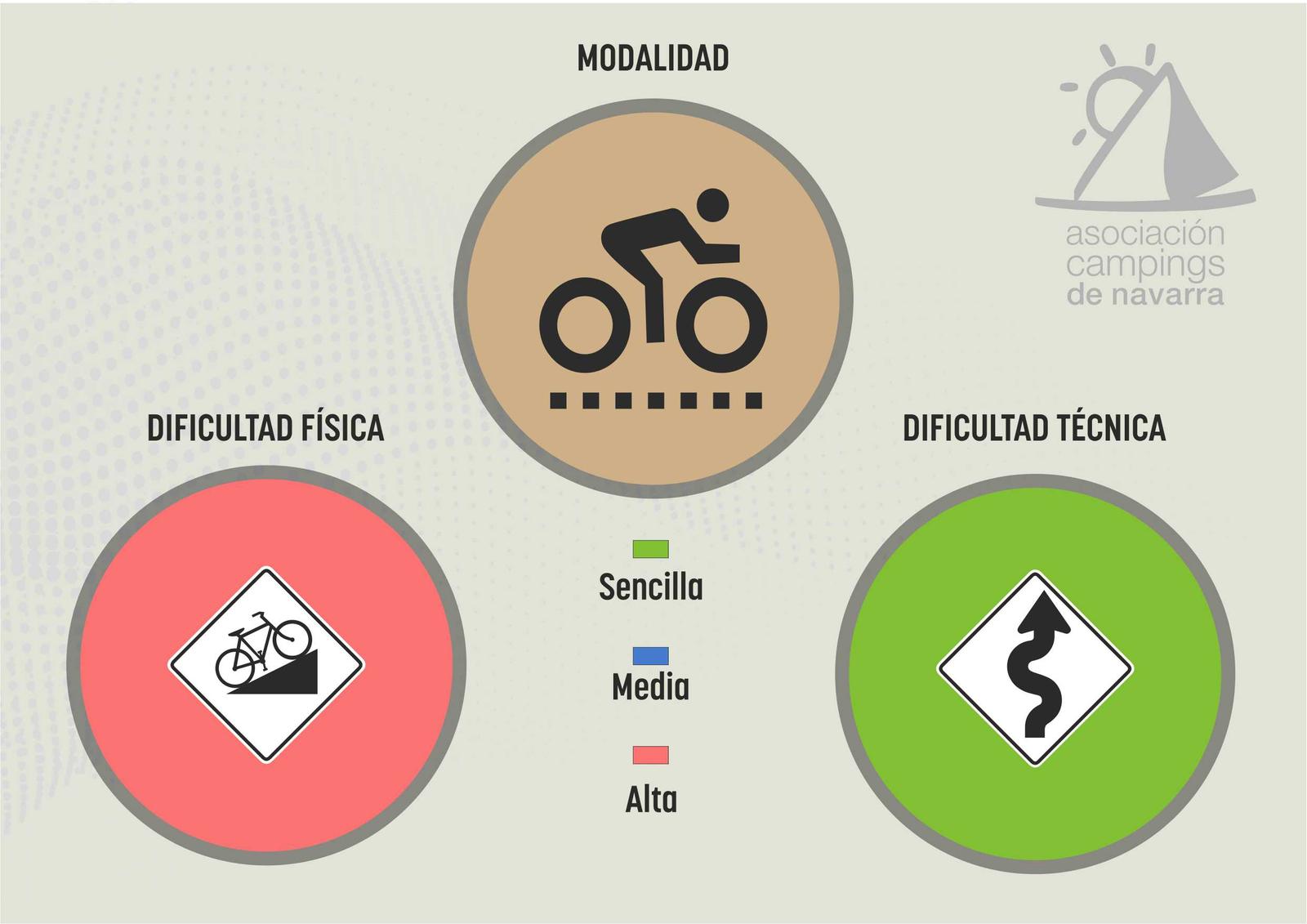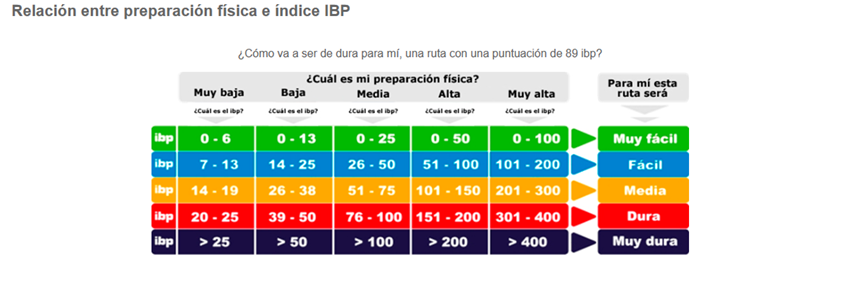The EuroVelo 3 enters Navarre through the Pyrenees via the Organbide pass, where you can enjoy nature in its purest state, the remains of megalithic constructions and small groups of cattle, sheep, horses and cows make up an idyllic landscape. The route leads to the old arms factory of Orbaizeta, a building dating back to the 18th century, one of the most important industrial factories of the time. The itinerary continues to Orreaga/Roncesvalles, a key landmark to visit, not only for its rich artistic heritage but also for being one of the most emblematic points of the Camino de Santiago, as it is considered the gateway to the peninsula. Following the Camino, the so-called village-streets that grew thanks to the Jacobean route, Auritz/Burguete and Auritzberri/Espinal, are crossed.

After the latter, it enters the Arce valley, a valley with small towns and rich landscape crossed by the Irati and Urrobi rivers. It continues towards the town of Nagore bordered by the reservoir and ends at Aoiz / Agoitz. The continuation of the route is in project pending execution, so an alternative route to Pamplona has been proposed. From the capital of Navarre, it follows the same route as the Eurovelo 1 and coincides to a large extent with the Camino de Santiago.
For this route we can rely on four campsites; Urrobi, Ezcaba, Lizarra and Iratxe. The distance between the entrance to Navarra and Camping Urrobi is 21.6 km, between Camping Urrobi and Camping Ezcaba there are 69.7 km, between Camping Ezcaba and Camping Lizarra there is a distance of 68.2 km, between Camping Lizarra and Camping Iratxe there are only 7 km and between the latter and the border of Navarra with La Rioja there are 44.9 km to go. We propose the use of gravel or MTB bikes but not road bikes because there are many dirt sections.
(Text: Tourism Navarra)
TECHNICAL DATA SHEET
Type: GRAVEL
Distance: 210.1 km.
Accumulated positive elevation gain (according to IBP index): 2,958 m.
Difficulty (IBP index): 223
DIFFICULTY

Physical difficulty: HARD
To define the physical difficulty of the routes we have used the IBP index.
IBP index is an automatic rating system that scores the physical difficulty of a route ridden on a mountain bike, road bike or gravel bike. This index is very useful to know the degree of physical difficulty of different routes by comparing them with each other.
It is important not to confuse the degree of physical difficulty of a route with the effort it will take to complete it: an IBP index of 60 will be a very hard route for an uninitiated person, normal for someone with average preparation and very easy for a professional.
In our case, we have taken as a reference a normal physical preparation to assess the physical difficulty of the routes.

Technical difficulty: EASY
For this section there is no mathematical formula that gives us a number, so the assessment is based on knowledge gained from experience.
We have defined the technical difficulty in 3 levels:
– Green color: simple. There is no notable technical difficulty on the route.
– Blue color: medium. We can find areas that present some technical difficulties. In the case of gravel routes, these will be areas with steep uphill or downhill slopes on non-compacted soil, sections of trail or soil in poor condition. In the case of MTB routes, they may be uphill or downhill sections of trail with some complicated passages, due to the state of the terrain or because they are natural trails with a very damaged floor. In both cases, these sections represent a small percentage of the total length of the route.
– Red color: difficult. In both gravel and MTB we find complicated areas such as those defined in the blue color, but with greater frequency and intensity.
On road routes the technical difficulty will always be green, but if the ground is wet or there are ice slabs present, the situation will change completely.
DOWNLOADS OF THIS ROUTE
MAP
RECOMMENDATIONS
- The Navarre Campsites Association does not guarantee the maintenance of the routes, so it is possible to encounter obstacles on the routes. However, if this should happen, we would appreciate it if visitors would let us know so that we can take this into account for the future passage of other people.
- It is highly recommended to carry the tracks in the GPS. In some remote areas it is easy to become disoriented.
- It is essential to carry plenty of water for all routes, especially in summer.
- The use of helmets is mandatory.
- Practice low-impact driving to avoid erosion.
- If you are going out unaccompanied, leave notice of the route you are going to take.
- The trails are shared with hikers and horseback riders. Always yield the right of way, these people have priority.
- If you find a livestock closure, leave it as you found it after your passage.
- Facilitates the passage of livestock on all roads.
- Avoid leaving the marked road and accessing private properties.
- Respect the environment and do not leave waste.
- Avoid shouting and disturbing wildlife.
- If you see a hunting sign, turn around and choose another road.
- Respect traffic regulations.
- Be respectful of people on village crossings.
And enjoy the routes of our campsites in Navarra!








